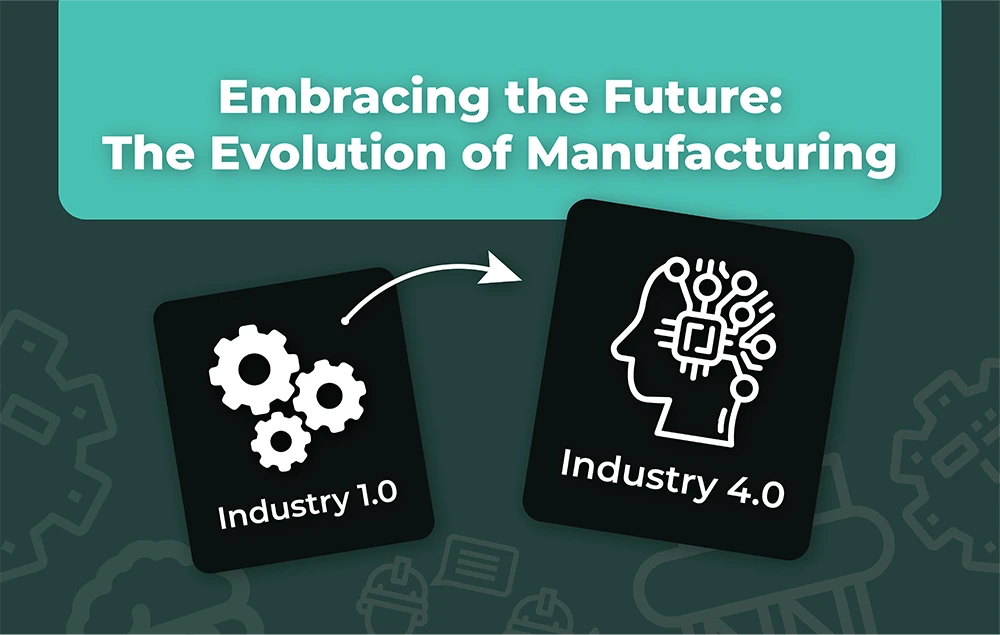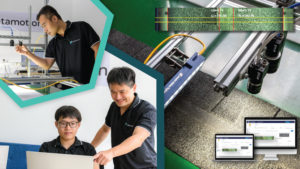“Perfection is not attainable, but if we chase perfection, we can catch excellence.”
– Vince Lombardi
Manufacturing has always been at the forefront of innovation, continually evolving to meet the demands of a changing world. Today, we stand on the brink of another revolution: the integration of AI into quality control. This article aims to provide a historical perspective, showcasing our journey from manual craftsmanship to modern automation. By understanding our past achievements, we can confidently embrace the future, honouring the tradition of manufacturing while enhancing our processes with cutting-edge technology.
A Brief History of Manufacturing
Early beginnings
Manufacturing dates back to the dawn of civilization, with early societies developing pottery, textiles, and tools requiring high skill and precision. Pottery, one of the earliest forms, began around 29,000 BCE. Techniques like coiling, pinching, and wheel-throwing improved efficiency, while quality control ensured the functionality and aesthetics of the creations (Wikipedia). These early practices laid the groundwork for modern manufacturing values.
The Industrial Revolution
The 18th century Industrial Revolution transformed production with innovations like the steam engine and assembly lines, increasing efficiency and enabling mass production (Encyclopedia Britannica). This era also introduced significant environmental pollution, leading to today’s focus on sustainable practices and cleaner technologies (Sapling).
20th century advances
The 20th century brought automation and the rise of factories, with quality control becoming essential. Henry Ford’s assembly lines revolutionised production speed and consistency. The mid-century saw the development of Total Quality Management (TQM) and Six Sigma, emphasising continuous improvement and statistical analysis. Automation and computerization, including PLCs and CAD, further enhanced precision and efficiency in manufacturing (Encyclopedia Britannica).
The current landscape
Modern manufacturing leverages advanced technologies like robotics and the Internet of Things (IoT) for real-time monitoring and data analysis. These innovations have transformed manufacturing, emphasising data-driven quality control and setting new standards for efficiency and precision.
AI – The Next Step in Quality Control
What is AI?
AI, or artificial intelligence, is a field that enables computers to interpret and make decisions based on various types of data. It involves training algorithms to recognise patterns and anomalies, making it an invaluable tool for a wide range of applications. Industries worldwide are leveraging AI to enhance their processes, ensuring efficiency, accuracy, and high standards in various operations.
Benefits of Quality Control
✓ Enhanced Accuracy: Automated inspection using AI ensures consistent and precise quality assessment, reducing human error.
✓ Increased Speed: AI systems can rapidly identify defects, significantly speeding up the inspection process.
✓ Consistency: Unlike human inspectors, AI systems provide objective and uniform evaluations, maintaining high-quality standards across all products.
Why isn’t AI widely adopted yet?
Why Isn’t AI Widely Adopted Yet? Despite its potential, AI adoption in manufacturing faces significant challenges. McKinsey highlights the need for massive data collection, integration with existing systems, and high expertise levels, which many firms lack (McKinsey & Company). Deloitte points to economic uncertainty, a skilled labour shortage, and the complexities of digital transformation as barriers (Deloitte United States).GMIS emphasises the difficulties in integrating new AI technologies with current processes and the necessity for investment and innovation (GMIS). The World Manufacturing Forum discusses the “great rewiring” needed for AI adoption, noting geopolitical tensions, technological rivalries, and the need for new business models, all complicating the transition while maintaining operational efficiency (World Manufacturing Foundation).
Overcoming Challenges with Smarter Integration
How can manufacturers overcome these challenges? By adopting smarter integration strategies that integrate into the existing processes – seamlessly. At Zetamotion, our Spectron™ integrates with existing QC operations, driving multiple benefits:
✓ Efficiency: Improved process efficiency through streamlined data collection and analysis.
✓ Accuracy: Enhanced accuracy in quality control and production processes.
✓ Growth: Facilitation of business growth by optimising production capabilities.
✓ Productivity: Boosted productivity through automated and intelligent QC processes.
✓ ROI: Increased return on investment by reducing waste and improving overall productivity.
From integration to perfection
At Zetamotion, we believe in “Perfect Data, Perfect Products.” This philosophy drives our approach to integrating AI into established manufacturing processes, ensuring a smooth transition and enhanced outcomes.
AI can significantly enhance Six Sigma methodologies by providing advanced data analytics capabilities. AI tools can handle large volumes of data, identifying patterns and root causes of defects with greater precision than traditional methods. This integration makes the DMAIC (Define, Measure, Analyze, Improve, Control) process more robust and effective, leading to higher quality and more efficient process improvements.
AI systems like Spectron™ are designed to augment human expertise rather than replace it. These systems learn from historical data and the valuable insights developed over years of manual processes. By analysing and enhancing this expertise, AI helps preserve the accumulated knowledge and skills, integrating them into a more advanced operational framework.
By adopting smarter integration strategies with solutions like Spectron™, manufacturers can overcome the challenges associated with AI adoption. This leads to a more efficient, accurate, and productive manufacturing environment that respects and builds upon the valuable expertise developed over years.
Conclusion
Our journey through the history of manufacturing reveals a legacy of innovation and a relentless pursuit of excellence. AI represents the next step in this evolution, offering unparalleled benefits for quality control. By embracing this technology, manufacturers can honour their craft and enhance their processes, ensuring accuracy, speed, and perfection.
The craftsmanship that has been honed over centuries is invaluable. AI empowers manufacturers to achieve new levels of quality and efficiency. By automating routine inspections, human workers can concentrate on tasks that require their expertise and creativity. This synergy between technology and human skill drives continuous improvement and innovation in quality control.
References:
GMIS 2022, Global Manufacturing & Industrialisation Summit.
Lisa, A. (2019) History of manufacturing in America, Stacker.
Industrial revolution (2024) Encyclopædia Britannica.
Mancini, J. (2021) The history of the manufacturing industry, sapling.
Manufacturing (2023) Corporate Finance Institute.
World Manufacturing Forum 2023 (2024) World Manufacturing Foundation.





